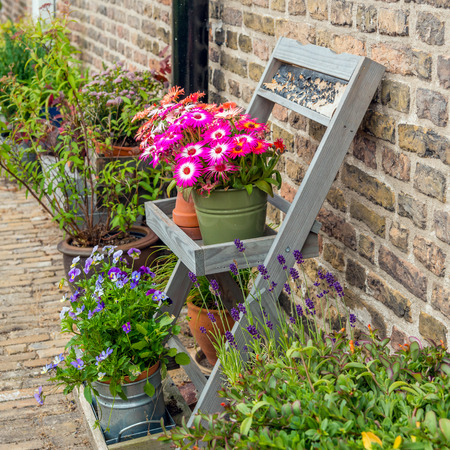Introduction to British Garden Traditions
Gardens have always held a special place in the British heart, weaving themselves into the fabric of daily life, history, and even the nation’s identity. From grand manor houses with their sweeping lawns to humble cottages adorned with wildflowers, gardens are far more than just outdoor spaces; they reflect centuries of evolving tastes, social change, and a deep-rooted connection to the land. In Britain, gardening is not merely a pastime but a cherished tradition passed down through generations, shaping both private lives and public landscapes. Whether it’s the formal symmetry of topiary or the relaxed charm of a rambling rose bush, these styles reveal much about British values and heritage. This article sets the stage by exploring how gardens have influenced and been influenced by British lifestyle and culture, providing the context needed to understand the ongoing dance between formality and informality in garden design across the UK.
2. Origins of Formal Gardens in the UK
The story of formal gardens in the United Kingdom begins with a nod to classical antiquity and the Renaissance, when garden design was as much about order and symbolism as it was about beauty. British aristocrats and landowners, eager to showcase their sophistication and worldliness, drew inspiration from the grand designs of Italy and France. These early influences shaped not only the layout but also the spirit of British formal gardens.
Early Influences: Classical and Renaissance Periods
During the late medieval period, British gardens were functional spaces, often focused on herbs and food production. However, the Renaissance brought a new appreciation for symmetry, proportion, and geometry—principles rooted in ancient Roman and Greek traditions. The arrival of these ideas marked a turning point. Wealthy estate owners began to adopt axial paths, enclosed parterres, and water features as status symbols and reflections of cultured living.
The Impact of French and Italian Designs
By the seventeenth century, the influence of continental Europe became even more pronounced. The stately designs of André Le Nôtre at Versailles dazzled English visitors. Simultaneously, Italian Renaissance gardens like those at Villa d’Este introduced terracing, ornate fountains, and clipped hedges. These ideas travelled across the Channel and took root on English soil—sometimes quite literally.
French Influence |
Italian Influence |
|---|---|
|
|
The Rise of Grand Estates
The desire for grandeur led to the creation of spectacular estates throughout England, Scotland, and Wales. Properties such as Hampton Court Palace, Chatsworth House, and Stowe showcased impressive avenues, topiary mazes, walled gardens, and elaborate waterworks. These gardens were not only places for leisure but powerful statements about wealth, taste, and social standing.
A Lasting Legacy
The formal garden style set down roots that would shape British landscapes for centuries to come. Though tastes would later shift towards more naturalistic approaches, the precision and artistry of these early designs continue to be admired—and preserved—in many historic estates today.

3. Development of Informal Garden Styles
As we move forward into the 18th century, the British approach to gardening underwent a remarkable transformation. The rigid geometry and symmetry of formal gardens began to give way to a new philosophy: naturalism and the picturesque. This shift was more than just a change in taste; it was a cultural movement that resonated with the ideals of freedom, romanticism, and a deeper appreciation for the British countryside.
The most influential figure in this transformation was undoubtedly Lancelot “Capability” Brown. Brown’s vision was revolutionary for his time—he saw landscapes not as canvases for control but as living, breathing entities best enhanced through subtle intervention. Gone were the clipped box hedges and parterres; in their place came sweeping lawns, serpentine lakes, and strategically placed clusters of trees. Brown famously remarked that he had “improved” more than 170 estates across England, reshaping not just gardens but also public perception of what beauty in nature could mean.
This period saw the rise of the so-called “English Landscape Garden.” Rather than imposing order upon nature, these gardens aimed to mimic it, encouraging gentle undulations in the land and planting trees in seemingly random—but carefully considered—arrangements. The idea was to create an idealised version of nature: pastoral vistas that looked entirely accidental yet were meticulously planned.
Other key contributors included William Kent and Humphry Repton. Kent, inspired by classical landscapes depicted in paintings, introduced features such as follies, grottos, and winding paths designed to lead visitors on a journey of discovery. Repton, meanwhile, brought together both formal and informal elements by introducing terraces and flowerbeds closer to the house, seamlessly blending architectural order with naturalistic surroundings.
This evolution reflected broader societal changes too. As Britain grew wealthier and more connected to global influences during the Georgian era, garden owners sought out new plants from abroad while also celebrating the native flora. The result was a style that felt inherently British—rooted in tradition yet open to innovation—a legacy that still shapes our gardens today.
4. The Interplay Between Formal and Informal Elements
One of the most fascinating aspects of British garden history is how the boundaries between formal and informal styles have continually blurred over time. Even the grandest, most meticulously planned gardens, such as those found at palatial estates, often borrowed inspiration from the natural world. Likewise, more relaxed and seemingly wild gardens sometimes included a touch of order or symmetry, reflecting not only personal taste but also shifting national sentiments about landscape and beauty.
To understand this interplay, it helps to look at how both approaches influenced each other across different eras:
| Era | Formal Features Borrowed from Nature | Informal Gardens with Formal Touches |
|---|---|---|
| 17th & 18th Century | Use of curving avenues mimicking natural woodland walks; clipped hedges shaped to echo rolling hills | Winding paths still leading to focal points like statues or sundials; flower beds arranged with subtle symmetry |
| 19th Century | Ponds and lakes designed to appear natural within geometric layouts; topiary imitating organic shapes | Wildflower meadows bordered by neatly trimmed lawns; rustic arbours placed for balanced views |
| 20th & 21st Century | Structured terraces softened by cascading plants; formal parterres interplanted with wild species | Cottage gardens with clipped box edges; informal borders framing structured patios or seating areas |
This blending was often a reflection of broader societal changes. For example, the Victorian era’s fascination with collecting exotic plants led to an eclectic mix within otherwise formal layouts, while the Arts and Crafts movement championed a return to traditional craftsmanship—often expressed through carefully planned yet seemingly untamed plantings. Even today, you’ll find British gardeners mixing straight-edged lawns with billowing perennial borders, or letting roses scramble over precisely placed trellises. It’s a mark of British sensibility: a respect for order tempered by a love for nature’s unpredictability.
5. Modern Interpretations and the Contemporary Garden
In recent decades, the British garden has undergone a fascinating transformation, embracing both tradition and innovation to reflect changing tastes and values. Today’s gardens are less about rigid adherence to a single style and more about personal expression, practicality, and environmental responsibility.
The Rise of Native Planting and Eco-Gardening
One of the most noticeable trends in modern UK gardens is the shift towards native planting. Gone are the days when exotic specimens were considered the height of sophistication; now, there is a renewed appreciation for plants that thrive naturally in British soil. This movement is not simply nostalgic—it is rooted in a desire to support local wildlife, conserve water, and create resilient landscapes that require less intervention. Eco-gardening principles, such as composting, rainwater harvesting, and pollinator-friendly borders, have become common practice among both seasoned gardeners and newcomers alike.
Merging Formal and Informal Elements
Contemporary garden design often blurs the lines between formal and informal traditions. Many gardens now feature structured patios or geometric paths softened by wildflower meadows or relaxed cottage-style beds. It’s not unusual to see clipped box hedges bordering a pond filled with native waterlilies, or an orderly kitchen garden giving way to an untamed orchard. This merging of styles allows gardeners to honour heritage while accommodating modern needs—be it outdoor entertaining, child-friendly spaces, or easy maintenance.
Gardens as Living Spaces
Today’s British gardens are increasingly viewed as extensions of the home: places to relax, entertain, and connect with nature. Features such as pergolas draped with climbing roses, fire pits encircled by wild grasses, or vegetable plots nestled beside formal lawns illustrate how flexible design can cater to diverse lifestyles. Ultimately, the contemporary UK garden stands as a testament to adaptability—drawing inspiration from centuries-old traditions yet evolving to meet present-day demands for sustainability, beauty, and comfort.
6. The Legacy of British Garden Styles Worldwide
When we reflect on the history and evolution of garden styles in the UK, it becomes evident that British gardening traditions have left an indelible mark far beyond their own shores. From grand country estates to humble cottage plots, the principles and aesthetics born here have travelled across continents, adapting to new climates and cultures while retaining a distinctly British character.
The formal precision of the English landscape garden, with its sweeping lawns and carefully orchestrated vistas, became a model for aristocratic gardens throughout Europe and even as far afield as Russia and North America. Meanwhile, the informal charm of the cottage garden – full of perennials, roses, and winding paths – captured imaginations worldwide, inspiring gardeners to favour natural beauty over rigid order.
In modern gardening philosophy, these traditions still resonate deeply. Gardeners today continue to draw on the British ethos of harmony with nature, seasonal interest, and the subtle interplay between structure and wildness. Whether in public parks or private backyards in Australia, Japan, or South Africa, echoes of British design persist: clipped box hedges, herbaceous borders, and a love for native planting all speak to this enduring legacy.
Beyond mere aesthetics, there is also a cultural resonance. The British garden has long symbolised sanctuary, self-expression, and a connection to the land – values now embraced by communities worldwide who seek solace and creativity in their own green spaces. As gardening evolves to meet environmental challenges and changing lifestyles, the influence of UK garden styles serves as both a foundation and an inspiration for innovation.
In many ways, the story of British gardens is still being written. It lives on wherever people nurture plants not just for utility or display but for the quiet pleasure that comes from tending a patch of earth – an approach that remains as relevant today as it was centuries ago.


